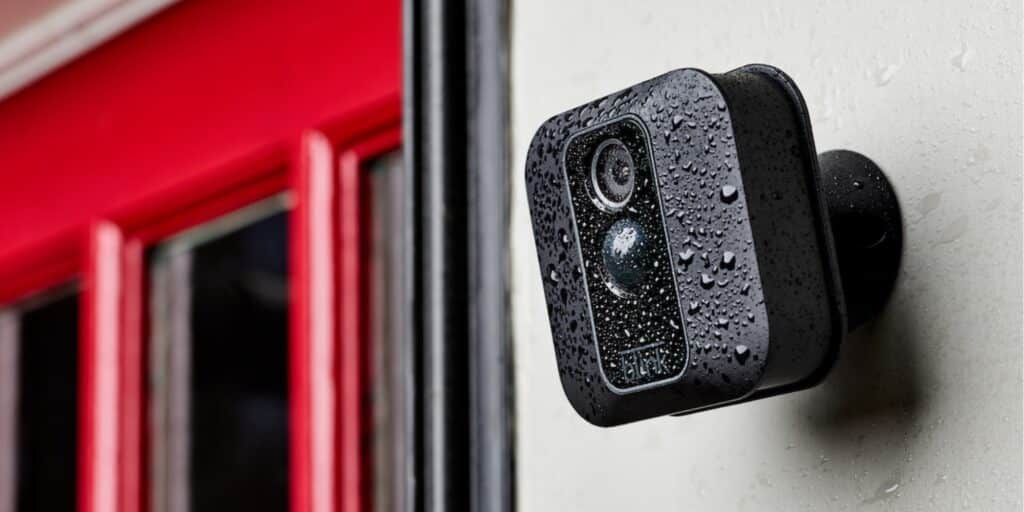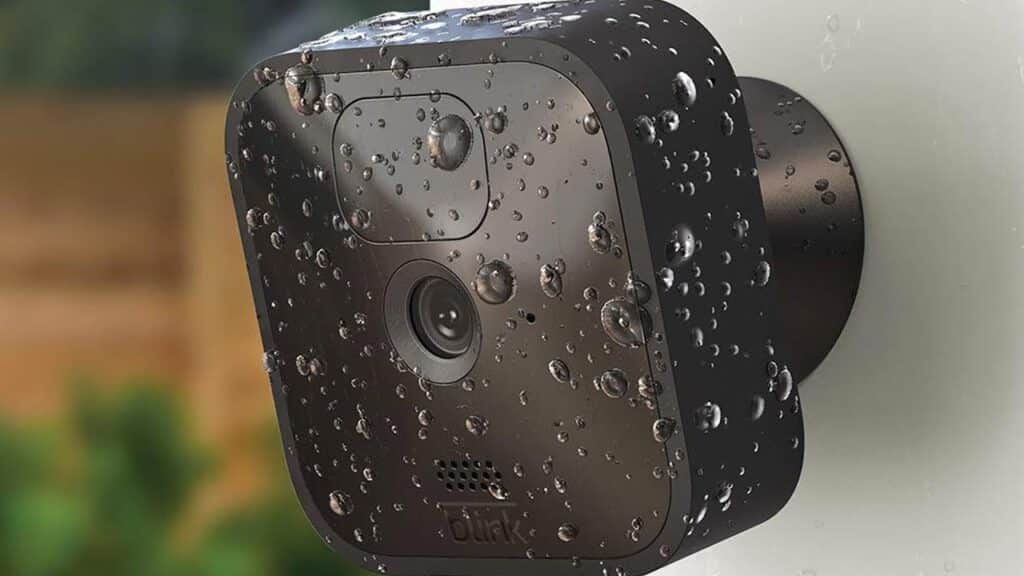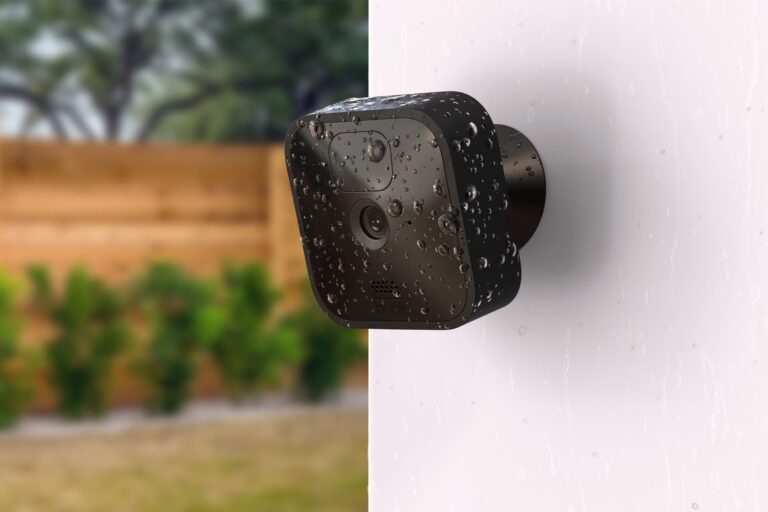Introduction
Are Blink Cameras Waterproof: In today’s digital age, home security has become a top priority for many individuals and families. With the advancement of technology, wireless security cameras have gained popularity as a convenient and effective means of monitoring homes and properties. Among the numerous brands available, Blink cameras have emerged as a popular choice due to their easy installation, affordability, and versatility. However, one crucial question that often arises when considering outdoor security cameras is whether Blink cameras are waterproof.
Waterproofing is a crucial factor to consider, especially for outdoor security cameras that are exposed to various weather conditions. Rain, snow, and even extreme temperatures can potentially damage the camera and impact its functionality. Therefore, understanding the waterproof capabilities of Blink cameras is essential to ensure reliable surveillance in all weather conditions.
Amazon owns the brand Blink, which makes a variety of portable security cameras that can be used inside or outside. Different Blink camera types may have different waterproofing features, but the company does make options that are waterproof and resistant to the weather. The tough design of these cameras keeps water damage away, so they can be used all year.

Can you put Blink camera outside?
Blink camera differences
The Outdoor camera is weather resistant, so it can be used both indoors and outdoors. The Indoors and Mini cameras are for indoor use only.
Blink cameras can be mounted outside. Blink offers outside camera options to help homeowners monitor and secure their property. Outdoor Blink cameras can survive various weather conditions, making them perfect for outdoor placement.
There are a few important things to remember when setting up a Blink camera outside. First, make sure you choose an outdoor type that is made to be used outside. Many of these cameras are weatherproof and have the right protection features to keep them safe from rain, snow, and other outdoor elements. For your Blink camera to work well and last a long time, it’s important to set it correctly.
A good field of view and protection from bad weather should be guaranteed by mounting it safely in a place that is out of direct sunlight. Think about things like the camera’s field of view, any possible obstacles, and the best height to record the area you want to keep an eye on. This could mean making sure that wires and connectors are properly sealed and kept dry. Regular care, like cleaning the lens and looking for signs of damage, will also help your outdoor Blink camera work at its best.
How do I get water out of my Blink camera?
Steps to Take to Remove Moisture:
- Bring the camera back inside (remove from original installation point)
- Place the camera and some silica bead packets inside the original bag packaging.
- Wait until condensation is dissipated.
If your Blink camera has been exposed to water or moisture, act immediately to prevent damage and restore correct operation. Remove water from your Blink camera with these steps:
Disconnect and power off
If you notice water in or around your Blink camera, the first step is to disconnect it from the power source and turn it off. This will help minimize the risk of electrical damage.
Remove the camera
Carefully remove the Blink camera from its mounting location. Be cautious when handling the camera to avoid any additional water ingress or potential damage.
Wipe and dry
Use a soft, lint-free cloth to gently wipe off any visible water from the camera’s exterior. Pay special attention to the lens, connectors, and any openings where water may have entered. Avoid using excessive force or abrasive materials that could cause further damage.
Air-drying
After wiping off the visible moisture, allow the camera to air-dry completely. Find a well-ventilated area with low humidity and place the camera in a position where air can circulate around it. Do not use heat sources or attempt to speed up the drying process with a hairdryer, as excessive heat can damage the camera.
Test and monitor
Once the camera is dry, reassemble and reconnect it. Power it on and check for any signs of malfunction or irregular behavior. Monitor the camera closely for a period of time to ensure that it continues to function properly.
Is Blink camera safe?
Blink cameras usually encrypt the recorded footage(video and still) for safekeeping. Due to encryption, any unauthorized access to the recorded footage is not possible. The proper encryption prevents data theft. Moreover, the cloud storages also use encryption for data storage.
Blink cameras are generally considered safe and secure for home surveillance purposes. Here are some reasons why Blink cameras are regarded as safe:
Encryption and secure data transmission
Blink cameras utilize encryption protocols to ensure secure transmission of data between the camera and the associated Blink Sync Module. This helps protect your video footage and prevents unauthorized access.
Cloud storage and remote access
Blink cameras offer cloud storage for recorded footage, allowing you to access and review videos remotely through the Blink app or web portal. The stored data is protected and accessible only to the account owner, adding an extra layer of security.
Two-factor authentication
Blink provides the option for users to enable two-factor authentication, which requires an additional verification step during login. This helps safeguard against unauthorized access to your Blink camera system.
Privacy features
Blink cameras offer privacy features such as customizable motion detection zones and scheduling options, allowing you to control when and where the camera records. This helps protect the privacy of your household and ensures that the camera focuses on relevant areas.
Trusted brand
Blink is owned by Amazon, a reputable and trusted company in the technology industry. With their established track record, Blink cameras are backed by a reliable brand that prioritizes customer security.

How long do Blink cameras last?
According to Blink, their cameras can last up to two years on a single set of AA lithium batteries. However, this estimate is based on the cameras being used for an average of 40,000 seconds per month, which equates to about 1,333 seconds per day.
Blink cameras are designed to be durable and provide long-lasting performance for home security needs. While the specific lifespan of a Blink camera can vary depending on various factors, including usage patterns, environmental conditions, and maintenance, they are generally expected to last for several years.
Blink cameras are known for being energy-efficient, which means that the batteries last longer. The batteries can last up to two years before they need to be replaced or charged again, but it depends on the type of camera and how often it is used. The cameras last this long because they have power-saving features, like going into a low-power standby mode when they’re not recording or looking for movements.
As for how long the gear lasts, Blink cameras are made to handle being outside and normal wear and tear. Because they are made to be weatherproof, they can stand up to rain, snow, and changes in temperature. To get the most out of the camera’s life, it is still important to setup and maintain it according to the manufacturer’s instructions.
Can Blink cameras see in the dark?
Blink cameras have an 850nm infrared (IR) LED light to show you clear video in areas of complete darkness. If Night Vision is enabled, your camera will be able to view and record in a low light or non-lit environment.
Yes, Blink cameras are equipped with night vision capabilities, allowing them to see in the dark or low-light conditions. This feature ensures that your home security surveillance remains effective even during nighttime or in areas with limited ambient lighting.
Blink cameras can take clear, detailed pictures in the dark because they use infrared (IR) technology. The cameras have infrared LEDs built in. These LEDs give off infrared light, which our eyes can’t see but which the camera’s picture sensor can. The image sensor in the camera then turns the infrared light into a black-and-white picture that you can see, even when it’s completely dark outside.
The Blink cameras’ night vision range can be different for each type. Most Blink cameras, on the other hand, have a range of at least 20 feet, so you can keep an eye on a large area around your property at night. Blink cameras can see in the dark, but the range and quality of the pictures can be limited by things like the subject’s distance, obstacles, and other light sources nearby. However, in most residential areas, Blink cameras have good enough night vision to record clear video and spot any possible security risks.
Are Blink cameras designed to be waterproof?
Yes, Blink cameras are designed to be weather-resistant and offer protection against water damage. While the specific waterproofing capabilities may vary between different Blink camera models, the company does provide options that are suitable for outdoor use and can withstand various weather conditions.
Blink, a brand owned by Amazon, offers specific camera models designed for outdoor installation. These outdoor models are built with weatherproof features, such as sealed enclosures and durable construction, to protect the cameras from rain, snow, and other environmental elements. They are designed to meet or exceed industry standards for water resistance.
While Blink cameras are made to be weatherproof, they might not always be completely waterproof. Conditions that are too extreme, like heavy rain or being submerged in water, could still damage the camera. It is best to place and maintain your cameras according to the manufacturer’s instructions. For example, keep the cameras away from direct sources of water or heavy rain.
What should I do if my Blink camera gets wet?
If your Blink camera gets wet, it’s important to take immediate action to prevent any damage and ensure its proper functioning. Here are some steps to follow if your Blink camera gets wet:
Disconnect and power off
Safely disconnect the Blink camera from the power source and turn it off. This helps minimize the risk of electrical damage and ensures your safety during the process.
Remove the camera
Carefully remove the wet Blink camera from its mounting location. Be cautious when handling the camera to avoid causing further water damage or potential harm.
Dry the camera
Use a soft, lint-free cloth to gently wipe off any visible water from the camera’s exterior. Pay attention to the lens, connectors, and any openings where water may have entered. Avoid using excessive force or abrasive materials that could cause damage.
Air-drying
Allow the camera to air-dry completely. Find a well-ventilated area with low humidity and place the camera in a position where air can circulate around it. Avoid using heat sources or attempting to speed up the drying process, as excessive heat can damage the camera.
Test and monitor
After the camera is dry, reassemble and reconnect it. Power it on and check for any signs of malfunction or irregular behavior. Monitor the camera closely for a period of time to ensure that it continues to function properly.
Are there any limitations to the water-resistant feature of Blink cameras?
While Blink cameras are designed to be weather-resistant and offer protection against water damage, there are some limitations to their water-resistant feature that users should be aware of. Here are a few considerations regarding the water-resistant capabilities of Blink cameras:
Degree of water resistance
While Blink cameras are built to withstand typical outdoor weather conditions, including rain and snow, the degree of water resistance can vary between different camera models. It’s important to refer to the specific IP (Ingress Protection) rating assigned to your Blink camera model to understand its level of water resistance. Higher IP ratings indicate greater protection against water ingress.
Heavy rain and submersion
Although Blink cameras can handle normal rainfall, they may not be fully protected against heavy or prolonged exposure to water. Extreme weather conditions, such as heavy downpours, may pose a risk to the camera’s performance. Submerging the camera in water is not recommended and may cause irreparable damage.
Maintenance and installation
Proper installation and maintenance are crucial for maximizing the water-resistant feature of Blink cameras. Ensure that all connectors, cables, and seals are properly installed and maintained to prevent water from entering the camera. Regularly check for any signs of wear or damage and take necessary steps to address them promptly.
Other environmental factors
While Blink cameras are designed to be water-resistant, they may still be susceptible to other environmental factors, such as high humidity or extreme temperatures. It’s important to consider the overall environmental conditions in your specific location and take appropriate precautions to protect your Blink camera.
If you anticipate harsh weather conditions or have concerns about the water resistance of your Blink camera, it may be advisable to take additional protective measures, such as installing a protective housing or shelter for the camera.

Conclusion
Blink cameras have proven to be a reliable choice for home security, offering convenient wireless surveillance at an affordable price point. When it comes to their waterproof capabilities, Blink cameras have been designed with the necessary features to withstand various weather conditions. While the specific waterproofing features may vary between different Blink camera models, the company offers waterproof and weather-resistant options that provide protection against water damage.
Understanding the waterproofing capabilities of Blink cameras is crucial for ensuring their reliable operation, especially when used outdoors. The IP ratings assigned to each model indicate their level of water and dust resistance, enabling users to make informed decisions based on their specific needs. By considering the IP rating and selecting the appropriate Blink camera model, users can confidently install their cameras outdoors and expect them to perform well in rain, snow, and other adverse weather conditions.
Even though Blink cameras are made to be weatherproof, they can still get broken. To get the most out of their performance and life, they need to be installed correctly and maintained regularly. By learning about how waterproof Blink cameras are, users can make their homes safer and rest easier knowing that their video system will still work well in all kinds of weather.

